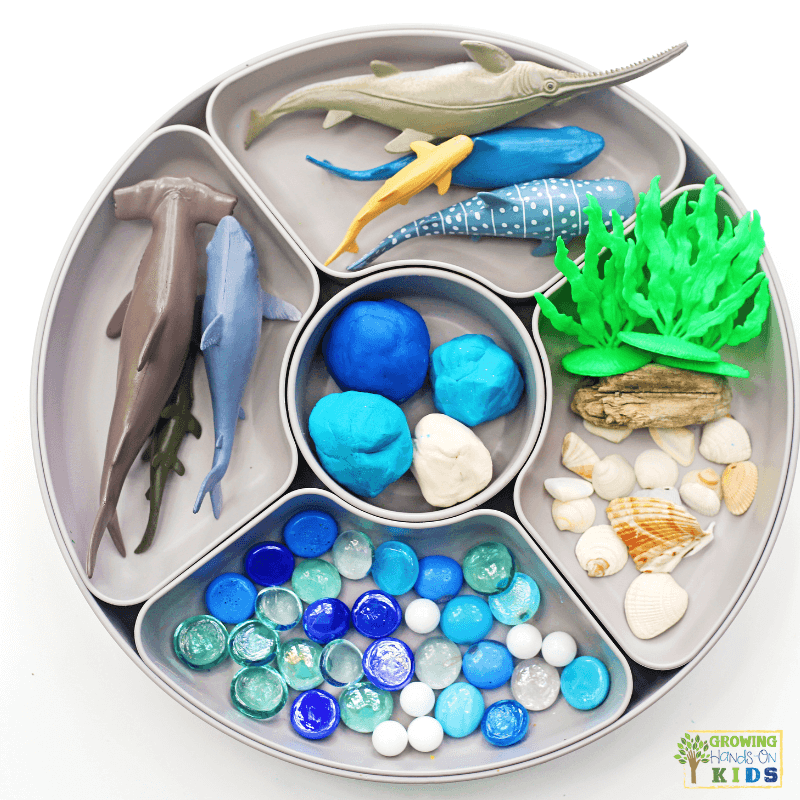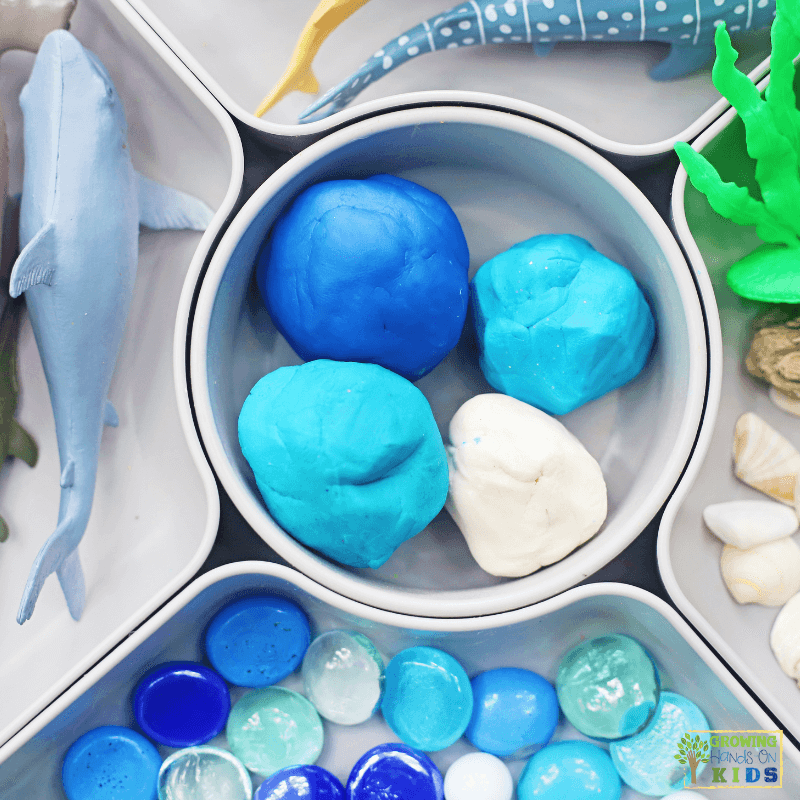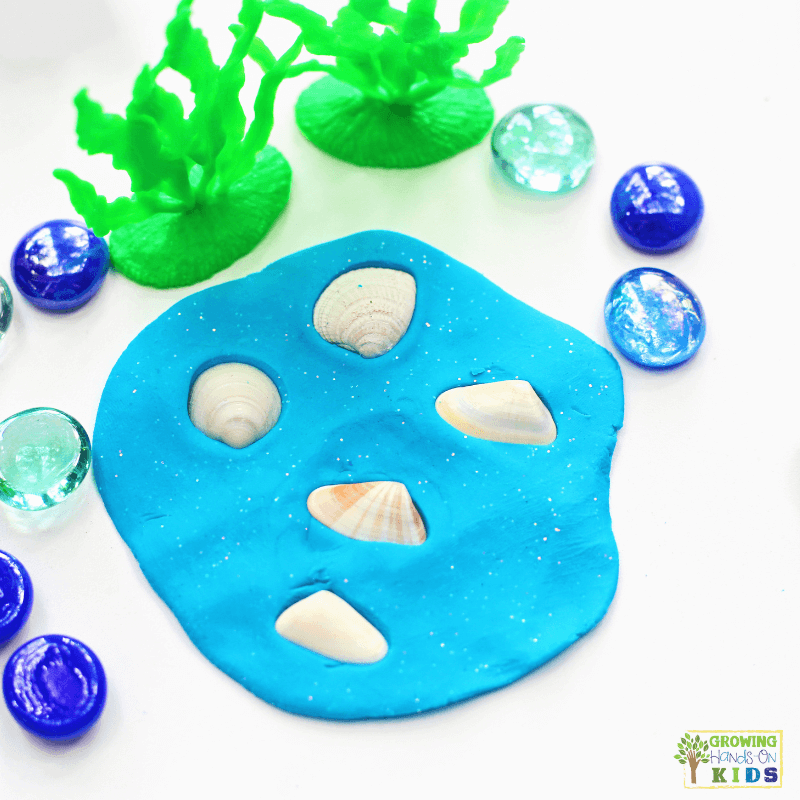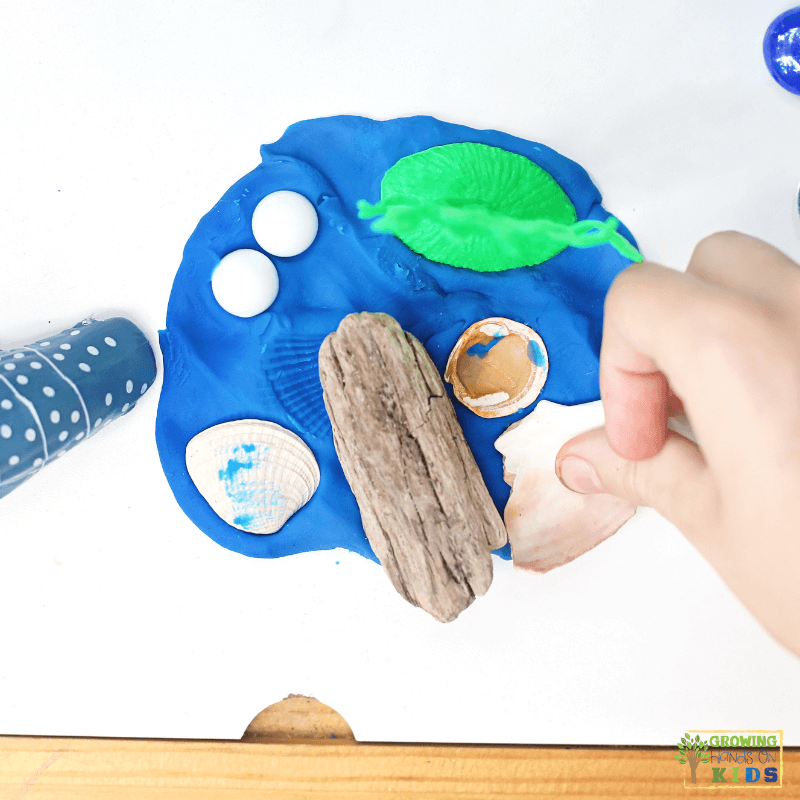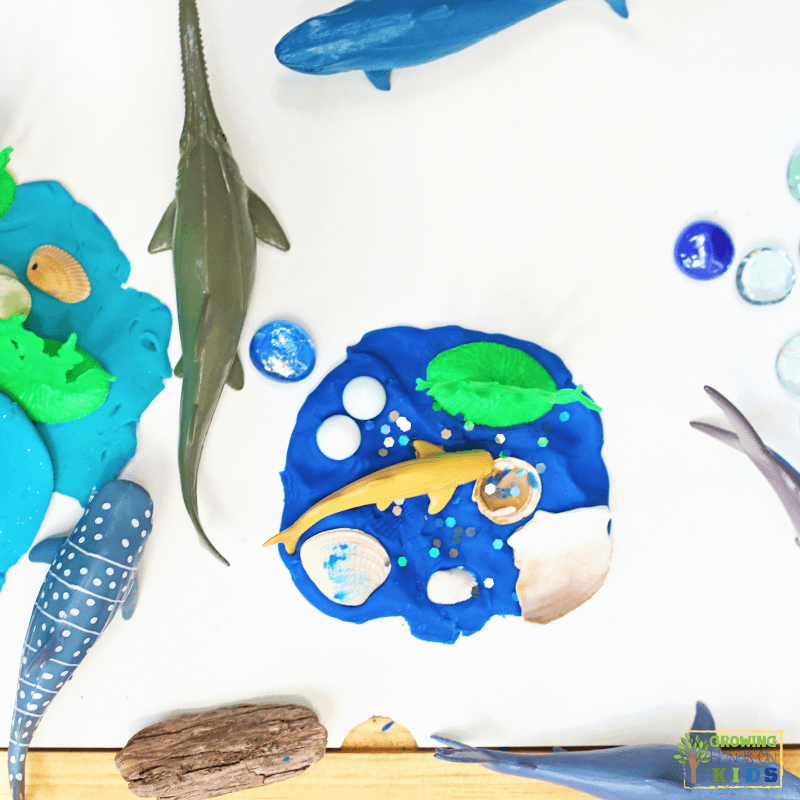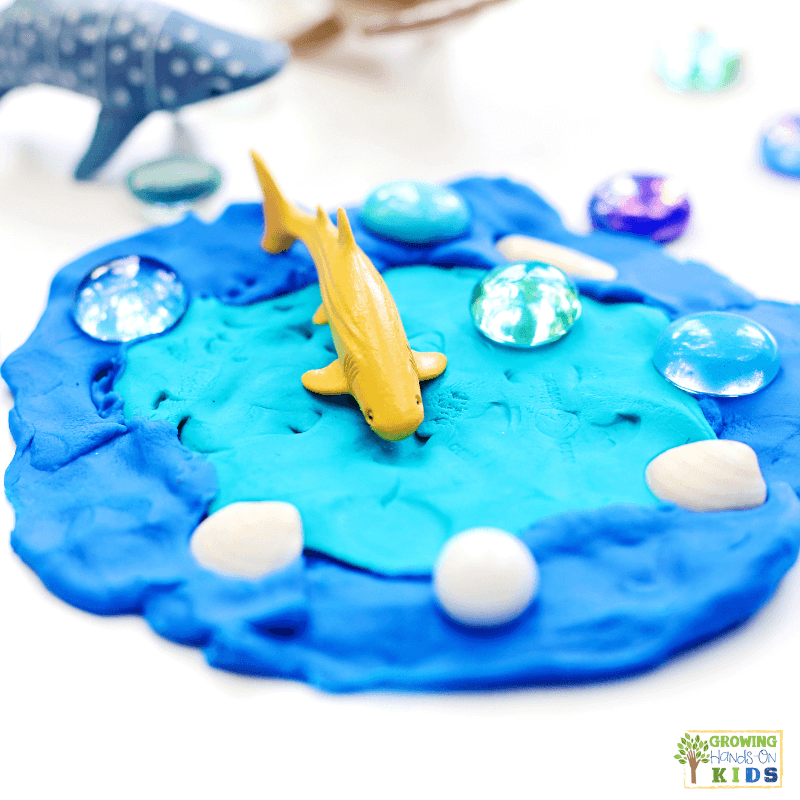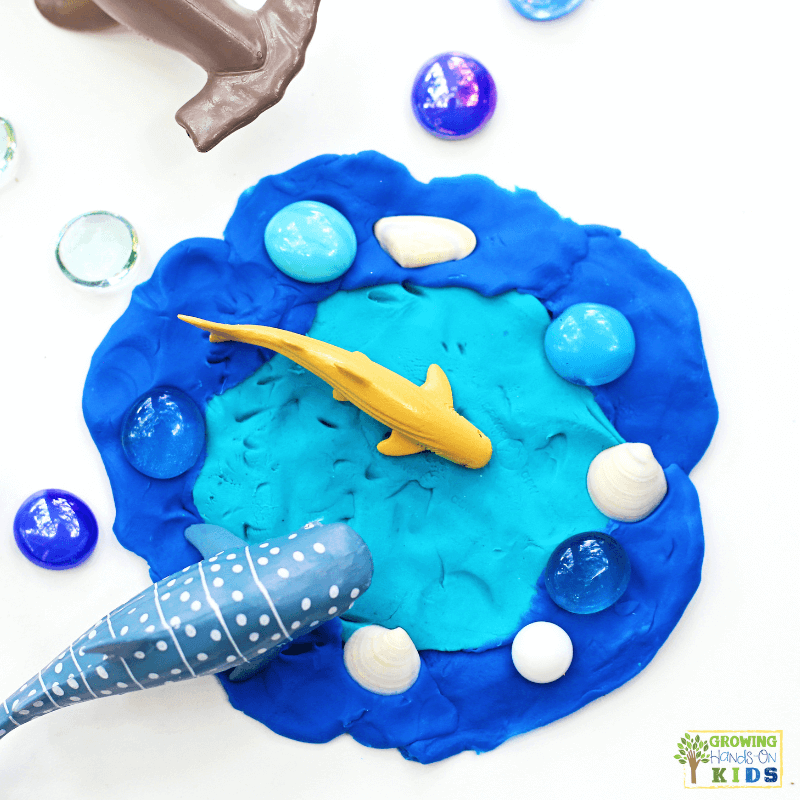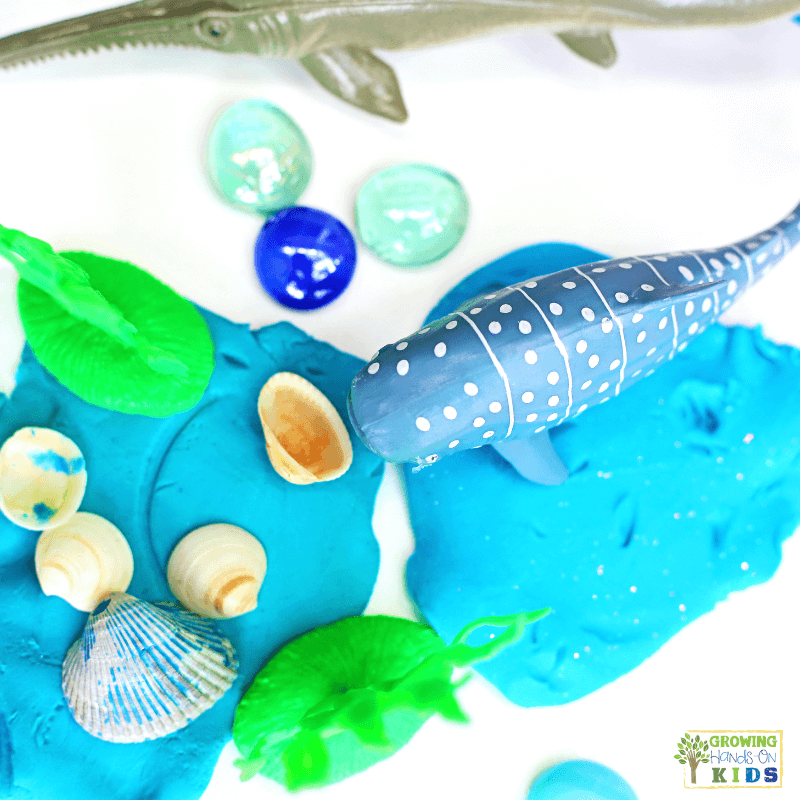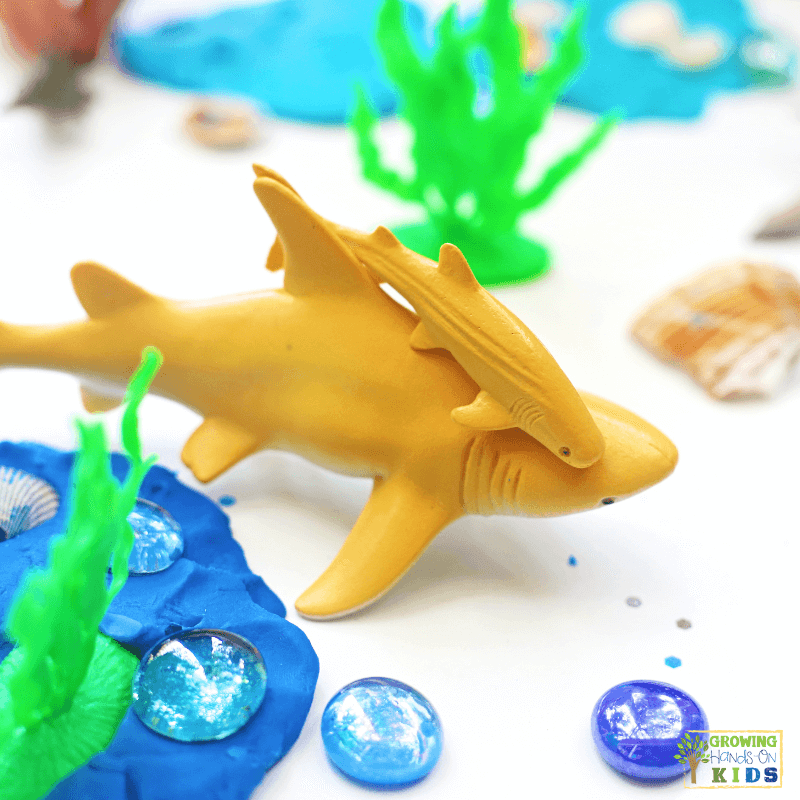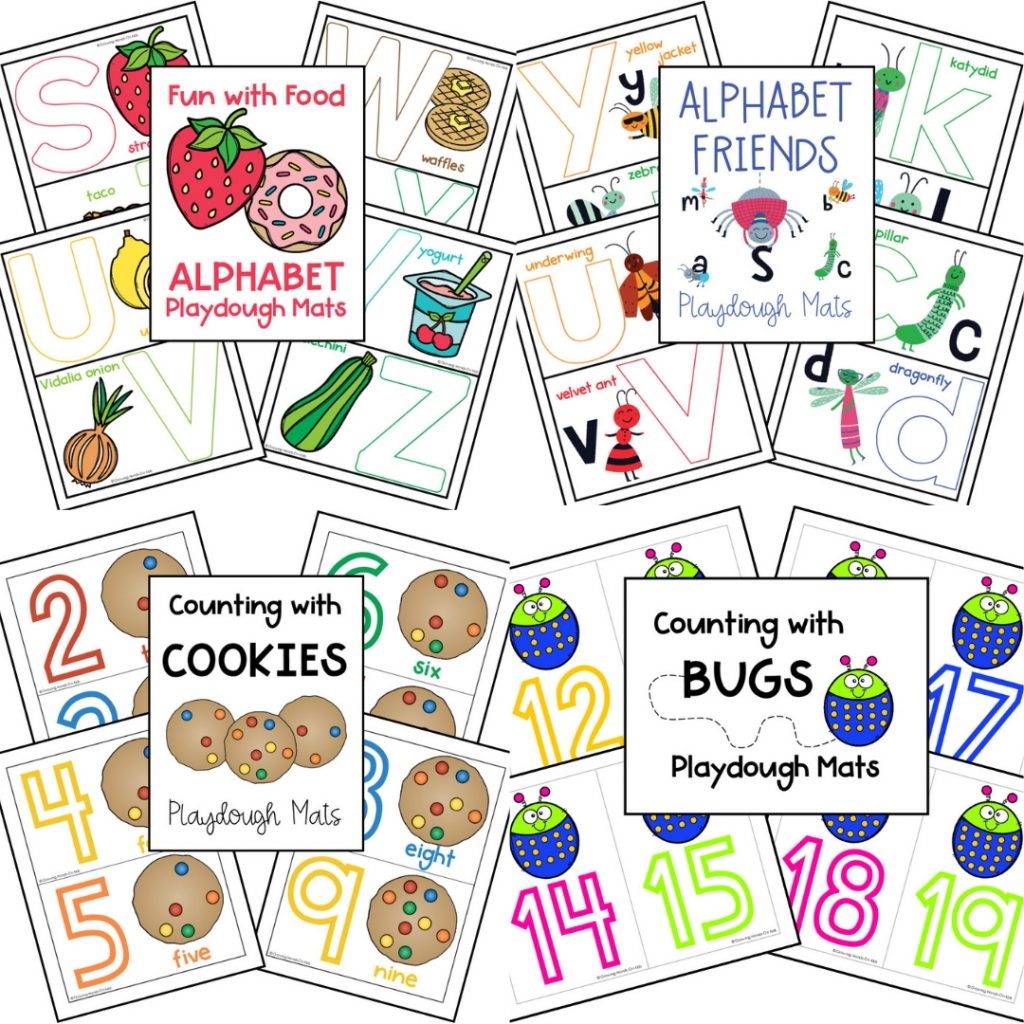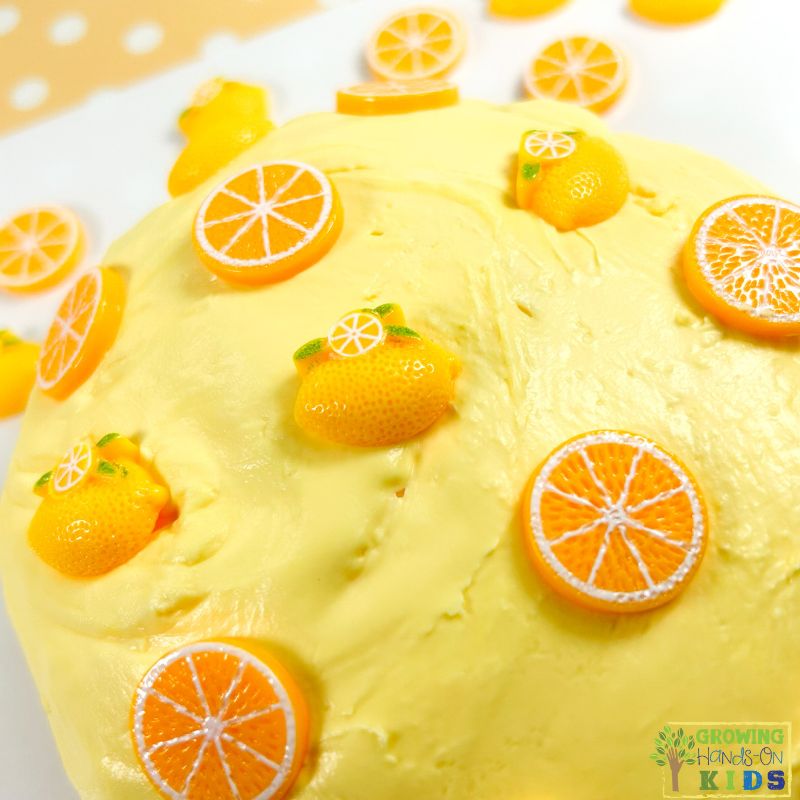Shark Playdough Tray Invitation
Affiliate and Referral links are used below to promote products I love and recommend. I receive a commission on any purchases made through these links. Please see my disclosure policy for more details. As an Amazon Associate, I earn from qualifying purchases.
Get ready for a hands-on ocean adventure and dive into some serious sensory fun with this shark-themed playdough tray! Whether you're a parent looking for a quiet afternoon activity, a teacher planning a themed learning center, or a therapist searching for an engaging way to build motor skills, this ocean-inspired invitation to play is packed with hours of fun.
Shark Playdough Tray Invitation Supplies
Here's what you will need to bring this tray invitation to life:
- White playdough
- Light blue, medium blue, and dark blue playdough
- Toy sharks
- Blue vase filler pebbles (for water texture)
- Real or craft seashells
- Divided tray (like a snack or chip tray)
You can use store-bought play dough, or use this recipe for homemade play dough and change out the colors of food coloring to get the right shades of blue.
Directions:
Make your play dough, if you are making it by hand, and gather your supplies. Place all the items in your divided tray or activity tray. Set it out on the table or activity area and let the kids take over. No adult direction required!
How Kids Play:
Children will explore the materials in their creative way. They might:
- Roll, squish, and flatten playdough to form waves, islands, or ocean floors.
- Press seashells and pebbles into the dough to make prints and textures.
- Pretend the sharks are swimming, hunting, or hiding in underwater caves.
- Build little habitats using the accessories.
This activity is child-led, so there's no “right” way to play. It’s just an open invitation to explore, imagine, and create.
Key Benefits of This Activity:
- Fine Motor Skills: Manipulating playdough strengthens hands and fingers, prepping them for writing and self-care tasks.
- Sensory Exploration: The variety of textures (smooth dough, rough shells, etc) provides a rich tactile experience.
- Imaginative Play: Acting out the shark scenes boosts creativity, language skills, and storytelling.
- Color Recognition: Exploring different shades of blue helps reinforce early color concepts.
- Calming Play: The rhythmic motions of kneading and pressing dough can help soothe overstimulated children.
Why Use a Tray Invitation?
For Parents:
Tray invitations are a simple way to offer screen-free, meaningful play. You can prep it in minutes, and your child will stay engaged while practicing important developmental skills—without even realizing it.
For Educators:
These open-ended setups are perfect for centers, quiet time, or sensory breaks. They promote collaborative play and support language development as children share their imaginative stories.
For Therapists:
Tray invitations like this one are goldmines for fine motor work, sensory regulation, and pretend play. They’re adaptable, easy to tailor to a child’s specific goals, and naturally motivating.
Let your little ones lead the way as they shape, press, and play their way through this ocean adventure.
For more hands-on play ideas, check out the following resources.
Alphabet & Number Play Dough Mat Bundle
Looking for a playful way to build essential early learning skills? This adorable bundle of alphabet and number playdough mats is perfect for little learners who love to squish, roll, and create!
Whether you're a parent looking for hands-on learning at home, a teacher adding fun to your literacy or math centers, or a therapist supporting fine motor development, these mats are a must-have!
You May Also Like:

Heather Greutman, COTA
Heather Greutman is a Certified Occupational Therapy Assistant with experience in school-based OT services for preschool through high school. She uses her background to share child development tips, tools, and strategies for parents, educators, and therapists. She is the author of many ebooks including The Basics of Fine Motor Skills, and Basics of Pre-Writing Skills, and co-author of Sensory Processing Explained: A Handbook for Parents and Educators.

